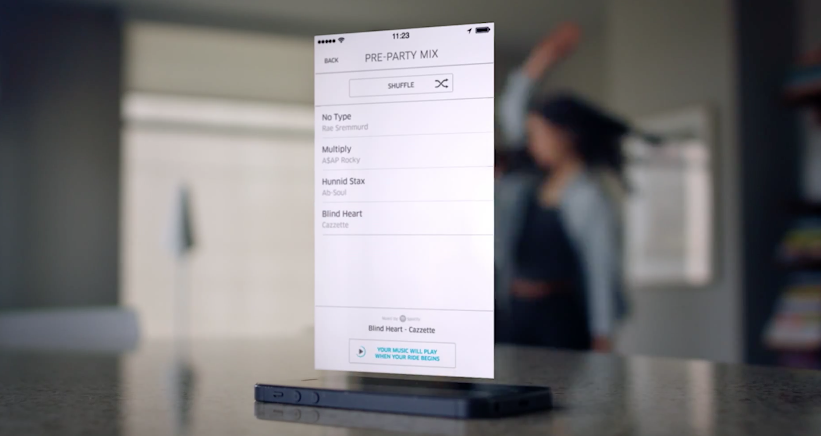The Cone of Spotify

In New York City, the environments of taxi and livery cabs are circumscribed in fairly specific ways by the Taxi and Limousine Commission. Passengers have the right to, among other things, “a smoke and scent free ride,” “air-conditioning or heat on request,” “a car that is clean, in good condition, and has passed all required inspections,” “a driver who does not use a cell phone while driving,” and “a quiet trip, free of horn-honking and audio/radio noise.”
These “rights,” while they largely regulate the driver’s behavior, are generally engineered toward creating as neutral an environment as possible, for both driver and passenger: When followed, the cab and its occupants suffer no remarkable sights, sounds, or smells; everyone in the vehicle remains equally unoffended. There is a bland plane of mutual respect — a human performing a service, another one paying for it.
Uber first subtly shifted this power dynamic by making cars immediately responsive to the remote-controlled beck and call of passengers. The old livery system, of calling a car service to kindly request that it dispatch a car to your location, maintained a more balanced power dynamic between driver and passenger; if you sounded like an asshole when you called a car service, you would possibly remain alone and stranded, where you belonged, while Uber requires drivers to accept some ninety percent of requests. (This is, however, in other ways, a most welcome disruption: It effectively blinds cab drivers to their customers, removing their ability to discriminate against potential fares for the wrong reasons — so long as they have money to afford an Uber car in the first place.) Further, by abstracting away the process of payment to near invisibility, it removed the concrete gesture that reinforced the fact that the passenger was paying real money to another human for their labor.
Uber’s newest feature, Soundtracking, allows passengers with a Spotify Premium subscription to commandeer a car’s sound system in order to play their favorite songs; they can queue up their music in the Uber app before the car even arrives. The shift is small but potent: The passenger now not only controls the location and vector of the car, but its ambient environment, with entirely optional regard for the other human behind the wheel. That human, one of the most visible laborers in a globalized world of luxury that is largely powered by invisible labor, is rendered a little less perceptible, literally muted by the acoustical products of the pop culture economy. (While, for now, drivers can opt out of allowing Spotify in their car, as Valleywag points out, it’s unlikely to remain so for long.)
By subjecting cars and their drivers to more total control by passengers, Soundtracking furthers the ongoing logistical process of dehumanizing Uber drivers, who will, at the end of it, be nothing more than a bundle of route optimization algorithms, machine vision, and mutually beneficial startup brand synergies: Seamless some food to your apartment, right from the Uber app so it’s waiting for you when you get back; let your Airbnb host know that you’re on the way from the airport; catch some complimentary HBO Go while you’re in the backseat; or book a table at your favorite restaurant with Reserve.
Besides, what are people with Rdio supposed to do?
